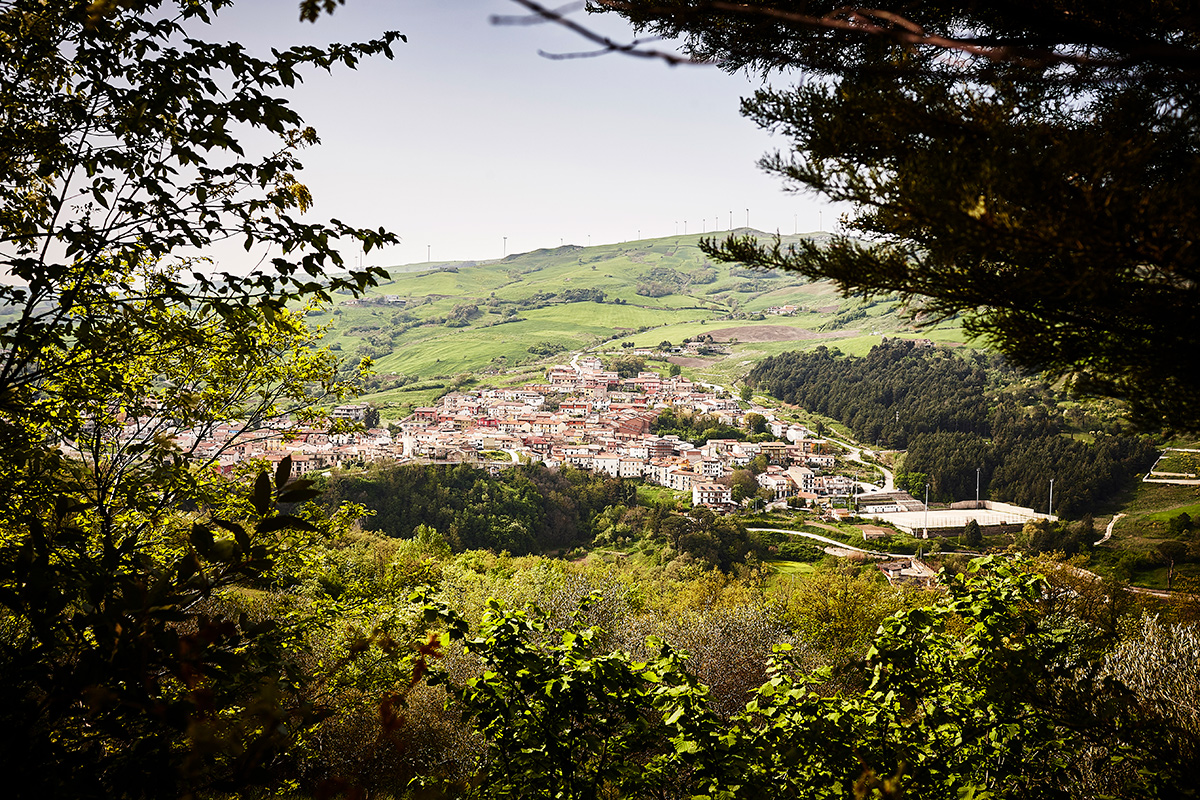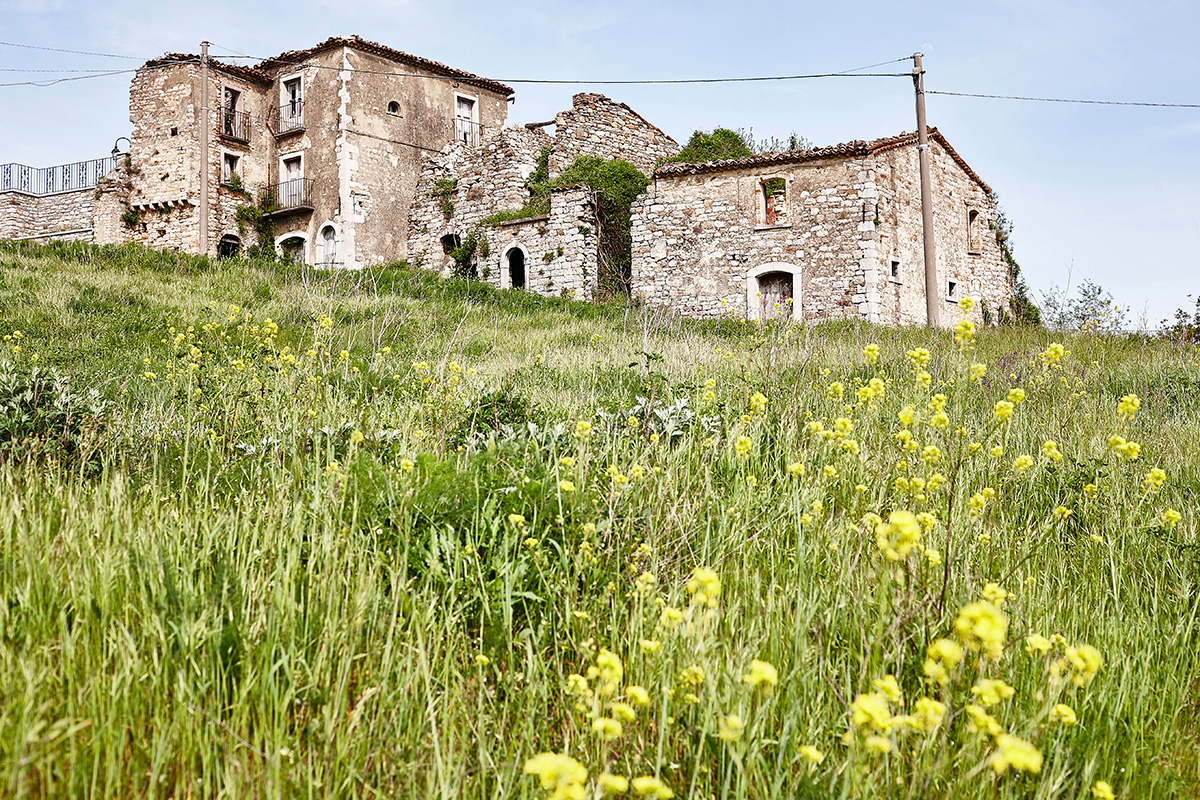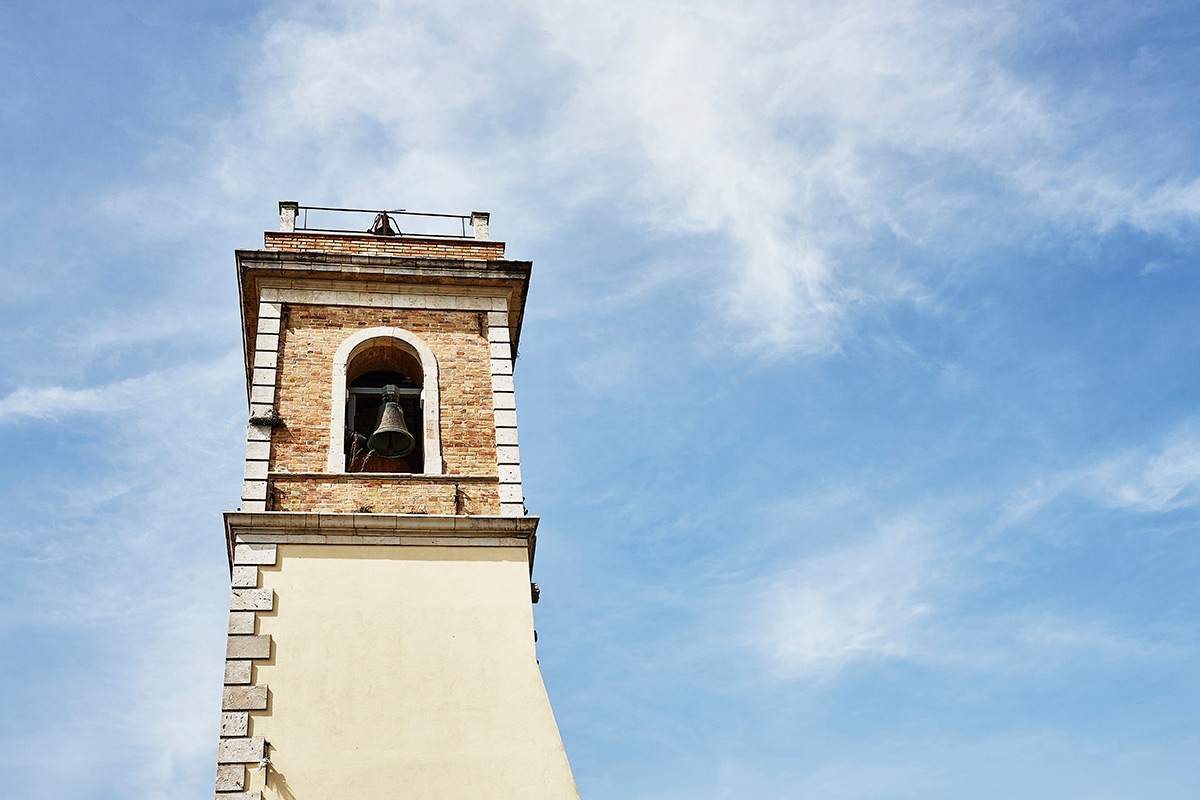Thick woods surround the sides of the mountains rising all around. Far higher than the hamlet of Foiano nestled in the valley crossed by the river Fortore from which it takes its name from.
A place that has always been a border and passageway, for men and herds, between Campania, Molise and Puglia, to which the town has been administratively linked in different periods of its history: first located in the province of Foggia up to 1811, then in the territory of Campobasso until the unification of Italy, after which it became part of the newly formed province of Benevento.
Its particular geographical position attracted in ancient times Greeks, Etruscans, Samnites and Romans. It is at the time of the latter that the toponym Fuganum dates back, the most remote, connected in retrospect to a praedium Fuganum of which ruins remain scattered in various hamlets, outside the main settlement. And then it was the turn of the Goths, Byzantines and Lombards, confirming the position and function of the crossroads of peoples and cultures of that land. Which later, under the Normans, became a fief of the Drago nobles.

Wald in the Germanic language of the Lombards, italianized in gualdo, indicated a wooded area. Like the one on Mount San Marco, where with the approval of Pope Adrian IV and the will of the hermit John who was its first prior, a large Benedictine abbey was built in 1156, built on the remains of a Roman temple dedicated to Pollux. The abbey was dedicated to Saint Mary from Gualdo of Mazzocca, dedicated to the then owner of the nearby land, before it was donated to the monastery. Later after, with the advent of the Angevins on the throne of Naples, the increasingly powerful abbey extended its dominion over the nearby village and its entire territory.
The return to a "laic" control of Foiano took place with the nobles De Capitanei of Novara, but it did not last long, before the town and the surrounding area ended up among the possessions of the nearby Badia of San Bartolomeo in Galdo, from which the economic and administrative dependence on a succession of cardinals. The first nobles to return to the feudal lords of Foiano were the Guevara di Bovino, a powerful family linked to the Aragonese. Over the centuries they were followed by the Carafa, the Gonzagas, the Spinelli di Buonalbergo and the Caracciolos. Until the restoration of the ecclesiastical dominion under the Jesuits of Benevento between 1607 and 1773. The transition to the Capitanata di Puglia followed until 1811, then the merger with Campobasso and, finally, the assignment in 1861 to the newly established province of Benevento with the unification of Italy. Administrative structure still today.

Meanwhile, the changes in the Mazzocca area had been great. At first an earthquake, in 1456, had caused enormous damage to the monastery, which was then completely destroyed by a fire in 1630. But that place had to remain forever linked to the faith of the Foianesi, also for the deep bond it had with the figure of their patron, San Giovanni Eremita, who had spent the last part of his life there until his death in 1170.
Thus, where the monastery had been, a chapel was built, which was consecrated on 12 July 1716 by the cardinal of Benevento Orsini, future pope, and dedicated to the Madonna and the Holy Hermit. Since then, every year on 24 June, the day of the patronal feast, all Foiano goes to the Chapel, a few kilometers away from the village, to pay homage to the saint fellow citizen, considered a point of reference for the population of Fortore who benefited so much during his life. The building with a neoclassical stone facade, on which two ancient reused columns stand out, was entirely rebuilt after the demolition in 1980. Since 2014 it has become a diocesan sanctuary. A monument to San Giovanni Eremita was also placed in Mazzocca in 1998, the work of the architect Castellucci and the sculptor Fagioli.

The mother church of Foiano, however, is located right in the center of the ancient village, in Piazza San Giovanni, and is dedicated to the Madonna del Rosario. Built in the sixteenth century, with a façade with neoclassical scrolls, it has three naves and houses various works of art. It is also worth visiting the church of the Madonna della Libera. Symbol of Foiano, in the upper part of the village, in a characteristic stone-paved square, stands the bell tower once attached to the church of San Pietro of which the last, picturesque testimony remains.

The area of San Giovanni is known and a destination for walks also for the presence just behind the Chapel, where it was once part of the monastery, of a delightful, small artificial lake, equipped for various sports activities. Of great naturalistic value, protected as a Site of Community Interest is the wood, the "gualdo" of Foiano, one of the largest in the entire Fortore valley.
Copyright video, photo and text © 2020


Comments powered by CComment